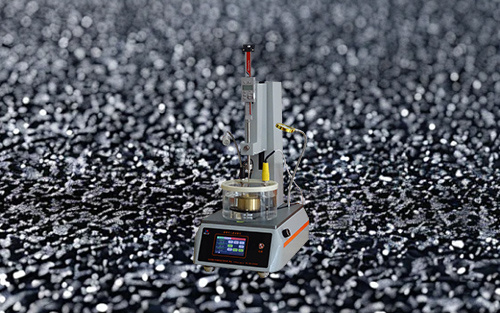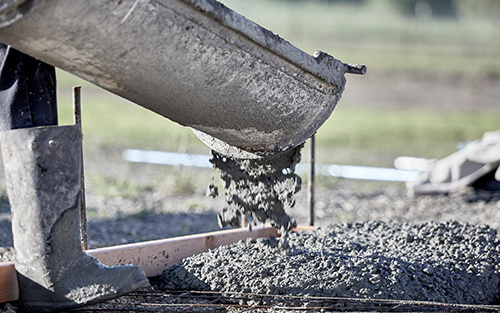This instrument is suitable for determining and evaluating the interlayer bonding strength between surface treatments, coatings, adhesive layers, penetrating layers, waterproof layers, etc., and asphalt layers, cement concrete layers, bridge decks, and other two different materials. It can also be used to determine the bonding strength of structure layer-adhesive layer-structure layer, and is used for indoor tensile testing of interlayer bonding materials.
This instrument is used to determine and evaluate the interlaminar bond strength between surface treatments, coatings, adhesive layers, permeable layers, waterproof layers, etc., and asphalt layers, cement concrete layers, bridge decks, and other two different materials. It can also be used to determine the bond strength of structure layer-adhesive layer-structure layer.
This instrument is used to determine the time required for a certain volume of coarse aggregate to pass through a fixed size opening, indirectly evaluating the angularity of the coarse aggregate. This method is applicable to the angularity determination of coarse aggregate with a nominal maximum size of 9'~19mm.
Compression performance tests for determining the assembly tolerance size of expansion joint devices in the field of bridge expansion are used to simulate the actual stress state of expansion devices in highway bridges. They can be used for testing samples such as single-seam modulus test devices and multi-seam modulus test devices, as well as waterproof performance testing methods.
The Microcomputer Controlled Electronic Tensile Testing Machine, specifically designed by Beijing Lanhang Zhongke Measurement and Control Technology Research Institute for rubber sealing strips in highway bridge expansion joints. The computer system, through a fully digital controller, controls the rotation of a high-precision stepping motor via a speed control system. After deceleration by the deceleration system, it drives the movement of the moving crossbeam via a precision ball screw pair, completing the repeated tensile mechanical performance test of the sample. It is suitable for rubber sealing strip performance testing in highway bridges and other applications. The equipment meets the requirements of JT/T326-2016 "General Technical Conditions for Highway Bridge Expansion Joints".
The LHB P-5 pavement profiler is a new type of pavement profiler. It was developed by incorporating user feedback on the LHB P series pavement profilers, retaining the advantages of the original instrument. In terms of electronic technology, it adopts the most advanced microprocessing and large-scale integrated circuit technology in China, improving the overall integration, reducing many unnecessary connector connections in the original instrument, thereby increasing the reliability of the system's operation, making the performance of the entire machine system more stable. Internally, it uses a single CPU structure, responsible for display, printing, calculation, communication, and data acquisition functions; it uses an interrupt method to sample data, so continuous measurements can be performed without interruption. Distance is calculated automatically; when 1000 data points are stored in memory, with a sampling interval of 0.1 meters, it can continuously measure 25 kilometers.
The principle is to spread dry sand of known volume and specified particle size into a circle of a certain area on the road surface. The ratio of the volume of sand to the average area of the covered surface is called the structural depth of the road surface. The unit is millimeters. It can reflect the macroscopic roughness of the road surface.
The T-CM type asphalt mixture coring machine (hereinafter referred to as the drilling machine) is a special tool for taking precise samples of asphalt mixtures on-site and indoors. It is easy to operate, lightweight and flexible, with accurate drilling and sampling sizes. The surface is smooth after drilling, and the drilled material is not unexpectedly damaged, making it an ideal construction machine.
This instrument is suitable for determining and evaluating the interlayer torsional shear strength between surface treatments, coatings, adhesive layers, permeable layers, waterproof layers, etc., and asphalt layers, cement concrete layers, bridge decks, and other two different materials. It can also determine the torsional shear strength of structure layer-adhesive layer-structure layer.
This instrument is an automatic data acquisition shear force and displacement sensor developed using digital sensor technology. Shear force accuracy 0.01KN. Automatically displays the peak value of the test, making the reading more accurate and intuitive.
This instrument is used to determine and evaluate the direct shear strength between two different materials, such as surface treatments, coatings, adhesive layers, penetrating layers, and waterproof layers, and asphalt layers, cement concrete layers, and bridge decks. It can also determine the direct shear strength of structure-adhesive layer-structure.
This instrument is suitable for determining and evaluating the interlayer shear strength of surface treatment, sealing layer, adhesive layer, penetrating layer, and waterproof layer, etc., with asphalt layers, cement concrete layers, highway asphalt pavement projects and concrete bridge deck asphalt paving projects. It can measure the direct shear strength or inclined shear strength between two different materials such as bridge decks. It can also determine the direct shear strength or inclined shear strength of the structure layer-bonding layer-structure layer.
This device can quickly, accurately, and in real-time detect and calculate indicators such as the International Roughness Index (IRI), structural depth (SMTD), rut depth (RD), bump (PB), wear index (PW1), riding quality index (RQI), observation score (RN), test speed, and driving distance for various levels of highway pavement. It can provide comprehensive and efficient data support for project completion acceptance, preventive maintenance, and pavement management systems (CPMS).
This product uses the Chinese transportation industry standard JTGE20-2011 "Road Surface Rubber Asphalt Sealing Glue" to test the low-temperature tensile properties of the sealing glue. It conforms to JT/T740-2015 "Road Surface Heating Type Sealant"
The pavement cross-section ruler is used to determine the rutting of asphalt pavement, used for evaluating the pavement condition and calculating the amount of maintenance work.
Pavement construction depth is an indicator of pavement roughness. In the past, China used manual sand spreading methods to determine the depth. Although this method is simple, the human error is too large, and there is a lack of practical operating standards. This situation can no longer meet the testing needs of China's road departments. Since the Ninth Five-Year Plan, China's expressways have entered a key construction phase. The Ministry of Transport's "Regulations on Field Testing of Highway Subgrades and Pavements" stipulates the content of the inspection, and promotes the use of electric sand spreading instruments to meet the needs of quality standard testing methods for expressway pavement engineering.















